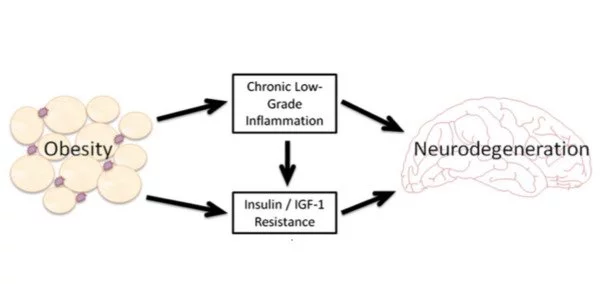Although the relationship between obesity, insulin resistance, and neurodegeneration is complex and not fully understood, there is evidence to support it.
Researchers at the Fred Hutchinson Cancer Research Center in the United States, led by Mroj Alassaf, have discovered a link between obesity and neurodegenerative disorders such as Alzheimer’s disease.
The study, which used the common fruit fly, found that a high-sugar diet, which is a hallmark of obesity, causes insulin resistance in the brain, which reduces the ability to remove neuronal debris, increasing the risk of neurodegeneration. The study, which was published in the open-access journal PLOS Biology, will have an impact on therapies designed to reduce the risk of developing neurodegenerative diseases.
Using fruit flies, the authors establish that high-sugar diets trigger insulin resistance in glia, disrupting their ability to clear neuronal debris. This research sheds light on how obesity-inducing diets may contribute to an increased risk of neurodegenerative disorders.
Mroj Alassaf
Although obesity is known to be a risk factor for neurodegenerative disorders such as Alzheimer’s and Parkinson’s disease, it is unclear how one causes the other. The new study sought to answer this question by capitalizing on similarities between humans and fruit flies.
Having previously demonstrated that a high-sugar diet causes insulin resistance in flies’ peripheral organs, the researchers turned their attention to their brains. They focused on glial cells because microglial dysfunction has been linked to neural degeneration.

Levels of the protein PI3k indicate how much a cell is able to respond to insulin. The researchers found that the high-sugar diet led to reduced PI3k levels in glial cells, indicating insulin resistance. They also looked at the fly equivalent of microglia, called ensheathing glia, whose primary function is to remove neural debris, such as degenerating axons. They observed that these glia had low levels of the protein Draper, indicating impaired function.
Further tests revealed that artificially lowering PI3k levels resulted in insulin resistance as well as low Draper levels in ensheathing glia. Finally, they demonstrated that after actually damaging olfactory neurons, the ensheathing glia in the high-sugar diet flies could not remove the degenerating axons because their Draper levels did not increase.
“Using fruit flies, the authors establish that high-sugar diets trigger insulin resistance in glia, disrupting their ability to clear neuronal debris,” the authors write. This research sheds light on how obesity-inducing diets may contribute to an increased risk of neurodegenerative disorders.”
















